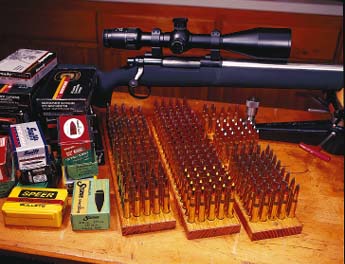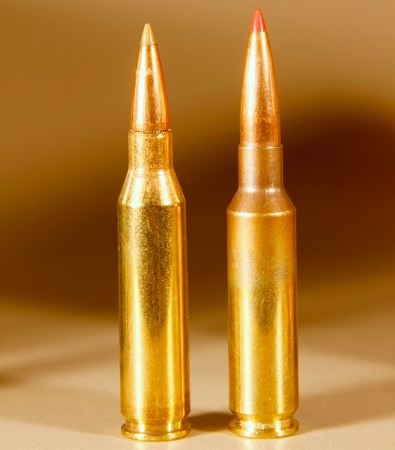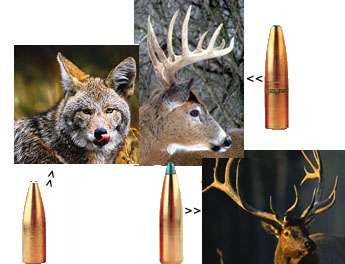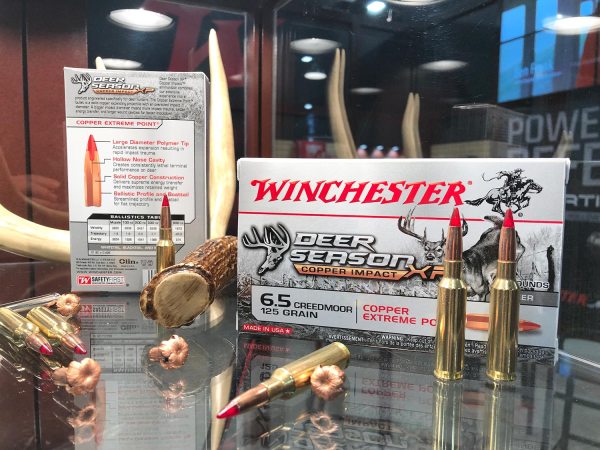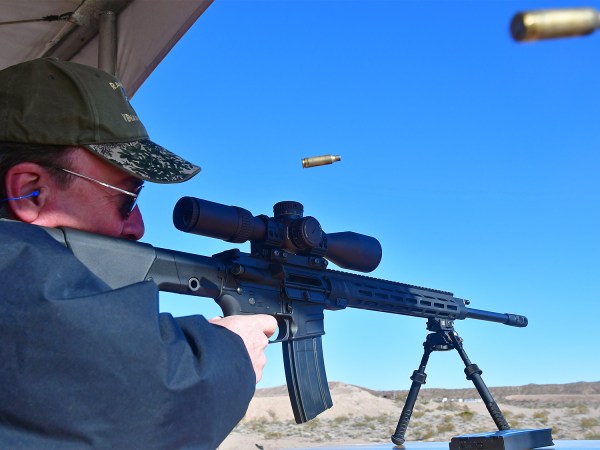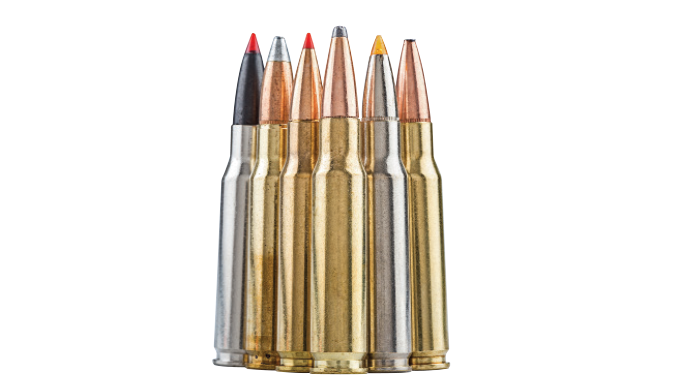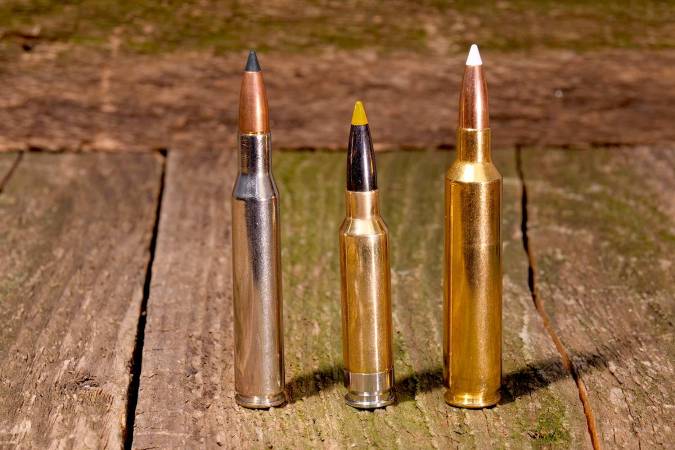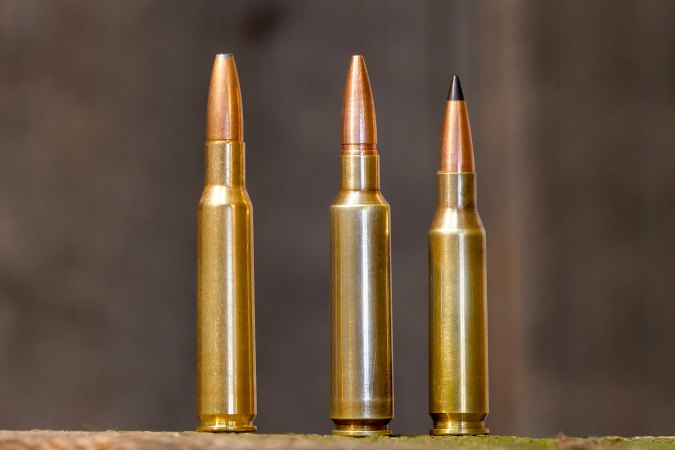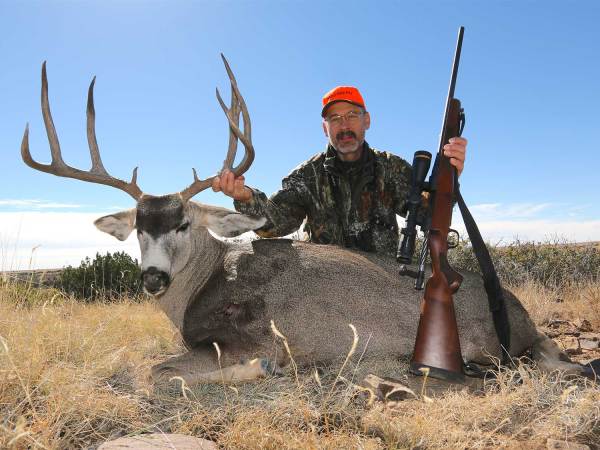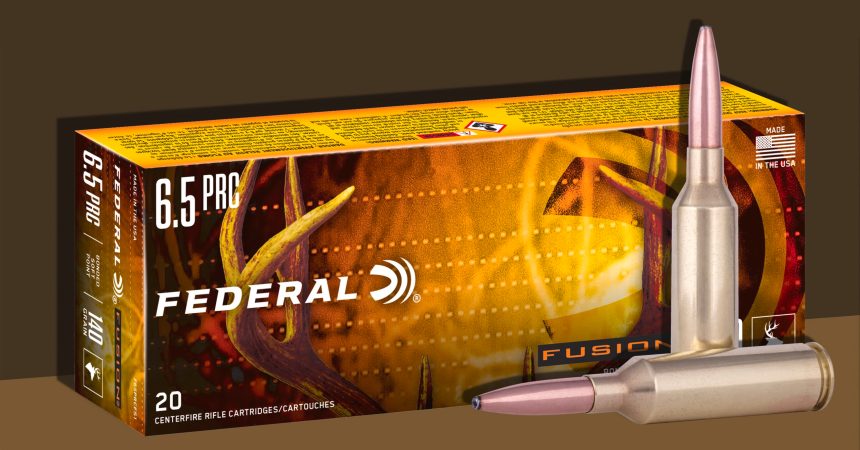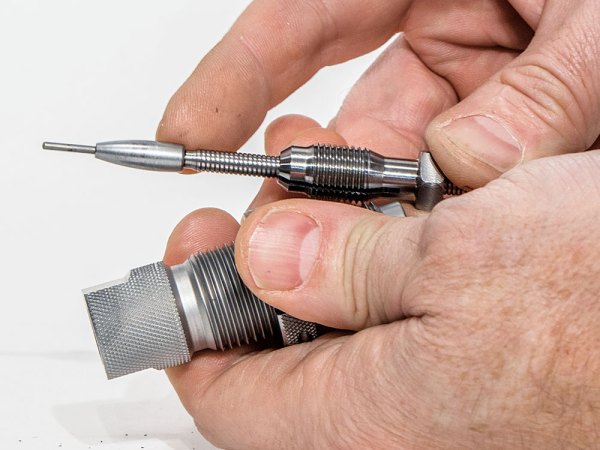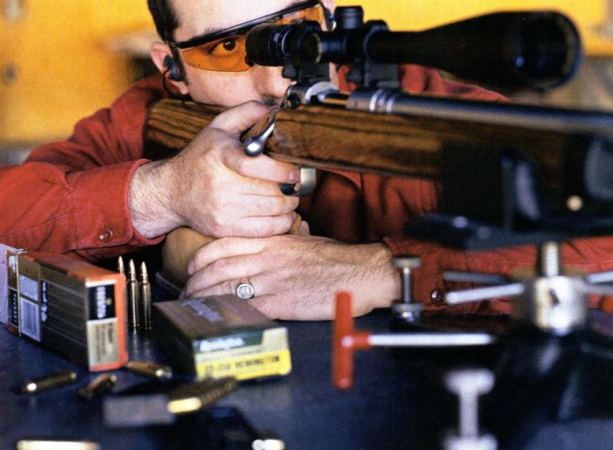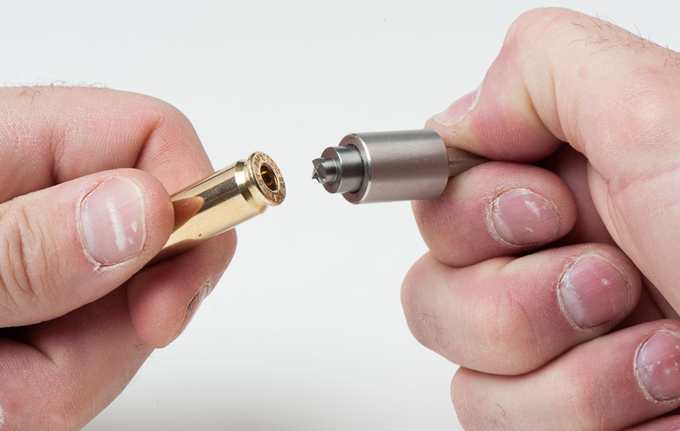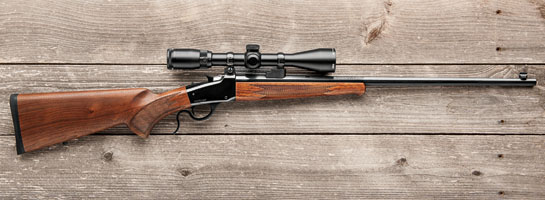We may earn revenue from the products available on this page and participate in affiliate programs. Learn More ›
The .270 Winchester will celebrate its 80th birthday in 2005. During its fourscore years of existence it has gained a worldwide popularity equaled by just a half dozen or so other calibers. While other, newer cartridges have blasted onto the hunting scene with great fanfare only to trickle into obscurity within a few years, the .270, if anything, has become even more steadfastly popular.
We at OUTDOOR LIFE take special pride in the ongoing success of the .270 because it was on these pages, through the romantic phrases and sound advice of Jack O’Connor, that the .270 became a hunting icon. Not before or since has any cartridge received such unstinting praise, and it was well deserved, for as O’Connor consistently reminded his readers, a good hunting cartridge is one you can hit with. The flat-shooting .270 reduces much of the guesswork associated with shots at often unknown distances and puts the bullet on target with a potent package of energy.
Yet despite its acclaim in hunting circles, there is one category of cartridge performance from which the .270 has been curiously absent: the hyper-charged area of pure accuracy. No question about it, the .270 has accuracy aplenty to take down an antelope at 300 yards, but that is a universe apart from the degree of accuracy needed to consistently drill five holes in a 1-inch circle at that same 300 yards.
Target shooters spend a lot of time talking about the accuracy potential of various cartridges In such discussions the .270 gets no respect. It is almost as if, at some point in the unknown past, it was decreed that the .270 would never be a contender in that arena. This becomes even more mysterious when we notice that calibers on both sides of the .270–the .22, 6mm, 6.5mm, 7mm, .30 and even the .338–have all made their mark in the world of super accuracy.
WHY THE BUM RAP?
Various explanations have been offered for the .270’s failure to be adopted by the accuracy elite, including the absence of finely accurate rifles and ammunition. But the fact is that the most popular target rifle of its era, Winchester’s Target Grade M-70, was offered in .270 chambering, along with other calibers. But so few were sold in .270 that Winchester took it out of its catalog in 1951.
It has been pointed out that during the era in which Winchester built target rifles, the only caliber allowed in NRA-type, high-power rifle competition was the .30/06, and therefore the .270 never had a chance to prove itself. However, when the rules were relaxed to allow other calibers, there was a rush to such calibers as the .243 Win. and .280 Rem., but not the .270.
Tim McCormack, longtime head of Remington’s Custom Shop, which turns out the finely accurate 40-X target rifles on a special-order basis, tells me that he can’t remember ever getting an order for a .270. This echoes Winchester’s earlier failure to seduce accuracy fans with a target-grade .270. All the more strange, as reported by McCormack, 40-X target rifles have been ordered in such unlikely calibers as the .350 Rem. Mag. and even .416 Remington.
Another suggested cause of the .270’s poor headway in the accuracy department is the failure of bullet and ammo makers to provide target-grade loads and components for the .270 as they do for some other calibers. Over the years major ammo makers have offered match-grade ammo in .30/06, .308, .223 and even .300 H&H, but after a search through catalogs dating back to the 1930s, I find no such listing for the .270.
Likewise, if you scan the product list of any of the big-name bullet makers, you’ll find .270-caliber hunting bullets aplenty, but nothing in the accuracy category, as offered in other calibers.
A few years back Sierra took the leap and offered a .270 (which is actually 0.277 inches in diameter), 135-grain MatchKing bullet, but according to Adam Braverman, Sierra’s vice president of sales and marketing, sales of the .270 MatchKings have been just a trickle. Here again, as Braverman points out, the paradox of the .270 is that while .270-caliber hunting bullets remain among Sierra’s biggest sellers, the accuracy crowd remains unimpressed.
When all these aspects of the .270’s accuracy history are considered together, a pattern begins to emerge. One begins to wonder if there is something truly mysterious at work here. Or to put it bluntly, a mystery that has long tantalized arms makers and ballistic experimenters: Are there such things as inherently inaccurate calibers? And if so, is the .270 Winchester one of them?
TESTING BEGINS
To explore the mystery of the .270, OUTDOOR LIFE undertook what in all probability is the most exhaustive investigation of the .270’s accuracy ever conducted. The investigation began with the controlled firing of hundreds of test rounds of .270 ammunition and then continued into more hundreds of rounds as our findings were checked, rechecked and confirmed.
Firing such an extensive test is not just a matter of gathering up a bunch of rifles and plinking at targets. A test protocol must be established and special laboratory-grade equipment used throughout. A standard .270 hunting rifle, no matter how good, would be unsuitable because the rifle’s accuracy, or lack thereof, would be a major factor and would almost certainly skew test results.
Accordingly, we had a test rifle built with an extra-heavy SAAMI spec barrel (the type used in industry test ranges) with a 1-in-10-inch rate of twist, fitted to a “blueprinted” Remington 700 action. The assembly was then fitted in a heavy H-S Precision stock with the receiver bedded into a rigid aluminum cradle. The shape and structure of the H-S stock allowed the 17-pound rifle to be fired from benchrest-type supports or clamped in our 250-pound, free-recoiling Clerke machine rest.
This custom .270 test rifle is identical to our test rifles in other calibers, sometimes known as “slaves,” which typically are capable of 100-yard, 5-shot groups smaller than a half inch with “calibration” ammo. This is specially loaded ammunition of known accuracy that is used to calibrate or confirm that the test rifle is at peak performance at the beginning of each series of test groups.
ON THE RANGE
After a few test loads were tried, the calibration load selected was the 135-grain Sierra MatchKing, 55 grains of IMR-4831, Winchester primer and new, previously unfired Winchester cases. During initial confirmation a series of six 5-shot groups were fired rapidly without cleaning the barrel or allowing it to cool. The purpose was to determine whether the barrel had any tendency to shift point-of-impact or lose accuracy when hot or badly fouled. If any of the six groups had been larger than 0.750 inches (3/4-inch), the barrel would have been replaced. The largest group of the series measured 0.682 inches, with the average of the six groups being 0.624 inches. (Consistency is as much the essence of a good calibration load as accuracy.)
The last group of the series, fired when the barrel was extremely hot and fouled, was one of the smallest, indicating we had a reliable test rifle.
Our test protocol required four 5-shot groups fired consecutively at 100 yards with each load we tested. At the end of every 20 shots the barrel was cleaned and cooled. The firing series was divided into two parts: handloaded ammo–to test bullets–and factory loads. Factory-loaded ammunition was tested first, and from the beginning there were disappointments.
BRANDS VARY WIDELY
There are far too many brands, bullet weights and styles of factory-loaded ammo to test them all, so a cross-section of brands was tested. Mainly we tested the newer, top-of-the-line offerings with popular styles of bullets ranging from 130 to 150 grains.
It was fascinating to discover the wide differences in accuracy within a particular brand. For example, while Winchester’s Supreme-grade load with 130-grain Ballistic Silvertip averaged a tidy 1.114 inches, the 140-grain Fail Safe load could do no better than 2.700 inches.
Across the spectrum of factory-loaded ammo, groups tended to range in the 2-to-2 1/2-inch category. It was almost as if the ammo industry had decreed that the accuracy of .270 cartridges should be about 2 1/2 inches–no better, no worse. I expect this falls within the mysterious “within our specifications” category used by some makers to explain–or excuse–ammo of mediocre accuracy. I also strongly suspect that this is much of the cause of the .270’s reputation for bum accuracy–a situation made all the more peculiar when the same bullets, presumably identical to those loaded at a factory, handloaded to the same overall length, proved measurably more accurate. To be fair, this was not always the case, with the accuracy of some factory loads being virtually identical to handloads with the same bullet.
All handloaded ammo used in our test followed a strict loading regimen. Bullets of the same weight were loaded with weighted charges of the same propellant and seated to the same overall length in new, previously unfired cases. The type of propellant and the charge weights selected for the various bullet-weight categories were those widely recommended and considered optimum by reloading guides.
The only concessions made to gain top accuracy with handloads were rounding the case necks, individual hand seating of primers, use of a Redding benchrest-type, bullet-seating die for best alignment and, as mentioned, weighing each propellant charge.
TEST RESULTS
Predictably, the handloaded ammo was more accurate than the factory loads, with a few exceptions. As with other calibers, certain brands, weights and styles of bullets performed better than others. In no instance did a group with handloaded bullets measure as large as 2 inches, and groups measuring less than an inch were common.
Perhaps the biggest surprise of our test series was the accuracy of the .270 with a wide range of bullet weights. Whereas sub-MOA groups were common with bullets in the 130-to-150-grain range, there was similar accuracy with bullet weights of 90 and 110 grains, indicating the uncommon versatility of the .270.
The Sierra “Varminter” and Speer “TNT,” both 90-grain hollowpoints, delivered groups nearing a half inch. Our test load for these light bullets (61 grains of IMR-4831, yielding an MV of over 3,400 fps) would be devastating for woodchucks and other small game animals.
On the final day of test firing, we celebrated by varying from our strict protocol and entering two additional rifles in the race, one being a rare sample of Winchester’s M-70 Target model. Mounted with a 15X Unertl target scope of similar vintage, the M-70 produced a good first test group, with its first two shots overlapping. But even with our super-accurate calibration load, the final group, and those following, measured over 2 inches. This may well explain why there were so few orders for that model.
The other rifle was a standard-grade prewar M-70 made about the time Jack O’Connor began writing for OUTDOOR LIFE. How well did it shoot? Well, let’s put it this way: I’d put it up against any of today’s factory-produced .270’s. If you want to wager against it, bring plenty of cash.
For more shooting information, go to www.outdoorlife.com/shooting

